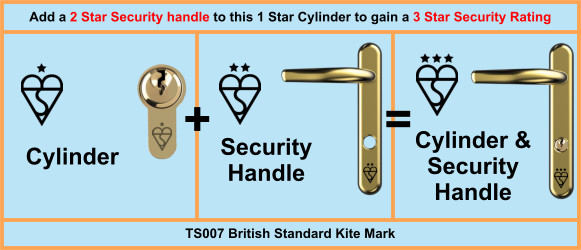Door Security & Furniture

Door Security & Furniture. Securing your home should not be complicated; you will first need to decide whether the whole lock or part of the lock can be replaced. There are several reasons why a lock or lock part might be in need of replacement. The most common reason is that your current one is broken. Another important reason is to increase the security of your home or you may have just moved house and require a change of locks.
External door locks come in two main varieties, Nightlatches and Mortice Locks.
Nightlatch: These are locks which are mounted onto the surface of the door as instead to being morticed into the edge of the door. Nightlatches are available in two different sizes – 40mm or 60mm backset. Furthermore this measurement is the distance from the keyhole to the edge of the door. The size of nightlatch you require is often dependent on whether or not you are fitting it to a panelled door. If you do you will probably need to buy a 40mm nightlatch to make sure that it fits on to the door.
A nightlatch holds the door shut on a latch which can often be deadlocked into position. Many have a Snib feature which is a button or slider on the nightlatch which enables the latch to be held back. Preventing the door from accidentally slamming shut. Nightlatches are still sometimes referred to by their traditional name of ‘rimlock’ although a rimlock usually now refers to a basic security lock used on internal doors, gates or outbuildings.
Double locking nightlatches such as the Yale British Standard BS1. Yale British Standard BS2. Yale Double Security P1 and Yale Double Security P2 have a keyhole on the handle. Inside the door so that the nightlatch can be deadlocked from inside. This is useful if you have a glass panelled door as if a burglar smashes the glass and reaches in. Ensuring they won’t be able to unlock the door. There are many types of nightlatches available. Also available are replacement Rim or Euro cylinders which means you can change your cylinder and keys without changing the lock.
Mortice Lock: These are locks which fit into a mortice that has been cut out of a timber door edge. The locking action is achieved by a bolt that shoots out of the lock into the striker plate when the key is turned. If you are replacing a mortice lock. First of all it is important that you know the size of your existing lock. To ensure that your new lock will fit into the same hole. Mortice locks are available in sashlock or deadlock variants. So it is important that you know which one you require.
Sashlock or Deadlock?
A sashlock is typically used on back doors and has a latch and a bolt. The latch is operated by a handle and the bolt is operated by key.
A deadlock is typically used on front doors in conjunction with a nightlatch and has a bolt only. The bolt is operated by key.
How many levers?
A mortice lock is either operated by a euro cylinder or by integral levers. The more levers a mortice lock has, the more secure it is. Look for a British Standard 5 lever mortice lock for all external timber doors.
Measuring the backset
The measurement from the front plate of the lock to the back of the lock case. A number of different backsets are available but the most common in the UK are 64mm (2.5″) or 76mm (3″).
Measuring the centres
If you are fitting a sashlock to enable the lock to be operated in conjunction with a door handle. Furthermore you will need to measure from centre of the ‘follower’ – the hole where the handle spindle goes, to the centre of the keyhole.
Typically in the UK, the most common size is 57mm, although other sizes are available,















Leave a Reply
You must be logged in to post a comment.